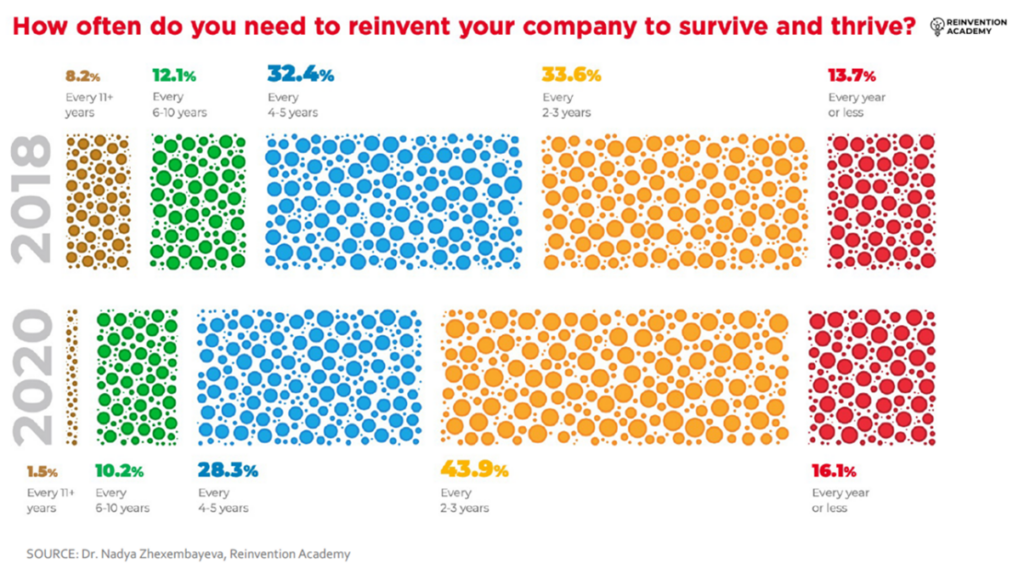This article is inspired by an incredibly thought-provoking idea that Dr. Nadya Zhexembayeva delivered during a recent workshop I hosted for my followers. You can get the recording here: Why You Need to Reinvent Your Organization (and Yourself) Every Three Years.
What do organizational leaders most commonly focus on?
In my experience, most organizational leaders focus on what they are evaluated on, which is generally some form of results or financial measures that are meant to be indicative of “success.” These results or financial measures most commonly include revenue, profit, share price, market share, or growth.
On the surface, there doesn’t seem to be anything wrong about focusing on these metrics. It makes sense to ask: “What else are leaders supposed to focus on?”
But, what I have observed is that when leaders and their organizations focus on the common metrics of success, they tend to operate in a manner that commonly limits the success, agility, and growth of the organization.
Specifically, when leaders and organizations prioritize “success” metrics, they generally only engage in the activities that they believe will be successful, which is usually “what has worked in the past.” They are reluctant to try new things or engage in the difficult path of reinventing or disrupting oneself, even if that is the most likely course for long-term “success.”
Reinvention is Needed More Frequently than Ever Before
Through her research, Dr. Nadya Zhexembayeva has found that in order for organizations to continually be successful, they need to reinvent themselves every three years, on average.

When we recognize this need for frequent reinvention, and we think about our typical measures of “success,” it is easy to see that: If we measure success by financial success, but have to reinvent ourselves every three years (which is costly), we are unlikely to make the reinvention investments as often as we need to.
What Should Leaders Focus on Besides Financial Measures of Success?
Dr. Nadya Zhexembayeva’s answer to this question is what I found so incredibly thought-provoking.
Her suggestion is that rather than focus on “success” metrics, organizations should focus on LIFE. Organizations should be focused on protecting and growing the amount of life in its system.
Consider your organization. How alive is it? And, does the future look more or less lively.
In fact, she suggests that we should focus on two perspectives of life:
- How much life is in the system TODAY?
- How much life will be in the system Tomorrow?

In my experience, I find that most organizations are operating in one of two modes:
- Titanic Syndrome (Decreasing in life today and jeopardizing tomorrow)
- Firefighting (Increasing in life today and jeopardizing tomorrow)
Again, I ask: How alive is your organization? Which quadrant do you think it falls in.
The Benefit of Focusing on Life
When an organization focuses on life instead of “success” metrics, they are more willing to let go of what has worked in the past and grab hold of what will work in the future (something that brings life).
If you think about it, people want to buy products and work with people that bring them life. If a product or person doesn’t bring them life, over time, they are going to swap out that product or person for something that is more life giving or life providing.
Introspective Questions
- How might your organization change if it focused on life?
- How might your leadership be different if you focused on life?
- How focused on life are you?
- Are you living in a manner that brings more life into the system around you?
- Are you developing yourself in a way that you will be able to bring more life into your systems in the future?
If you want to explore how you can elevate your leaders to be able to prioritize life in your organization, let’s connect.









